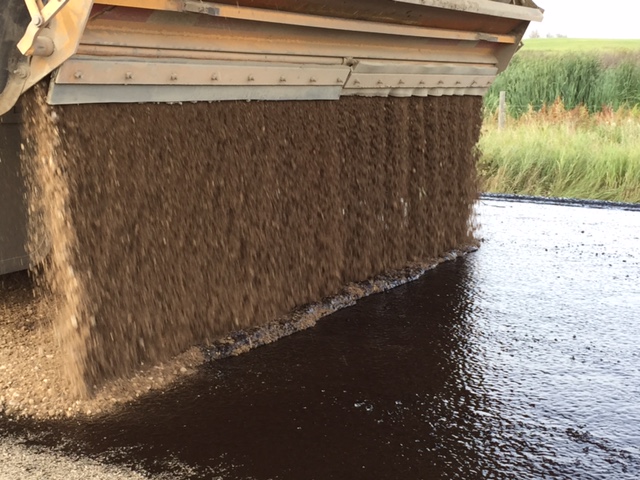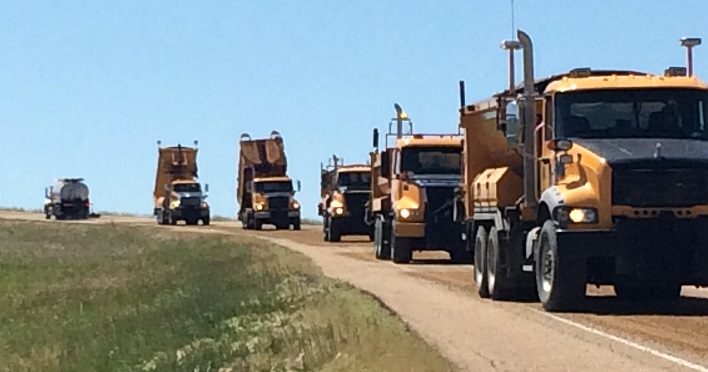Released on July 14, 2016
Obey Work Zone Signs to Save Your Windshield
With almost 800 kilometres of seal coating projects planned for this construction season, the Ministry of Highways and Infrastructure warns drivers to obey work zone signs to stay safe and to avoid damage from loose stones.
“Seal coating is a cost-effective way to extend the life of our roads,” Highways and Infrastructure Minister Nancy Heppner said. “This annual summer process makes our highways smoother and safer for motorists.”
Seal coating involves spraying hot liquid asphalt on a road surface. Immediately after that, crushed gravel chips are spread over the asphalt. Rollers then pack the gravel into the asphalt. The seal coat is left to cure for up to 24 hours.
While that work may look finished to some, driving too fast on a freshly-sealed road can loosen and throw stones that cause cracks in windshields. During the curing time, black and white 60 km/hr signs are left in place to protect motorists and their vehicles.
The loose gravel is swept off after curing. Seal coating extends a highway’s lifespan. The process prevents moisture from entering pavement cracks and penetrating the roadbed under the highway’s driving surface. If too much moisture gets into the roadbed – which supports the weight of the pavement above – it deteriorates and can lead to more highway damage.
Seal coating projects in various stages around the province include:
- Highway 1 at Piapot;
- Highway 1 at Swift Current;
- Highway 1 near Maple Creek;
- Highway 3 near Prairie River;
- Highway 3 near Frenchman Butte; and
- Highway 55 at Love.
A photo gallery featuring current work can be found at: www.highways.gov.sk.ca/2016construction.
If you’re planning a trip this summer, check the Highway Hotline at http://hotline.gov.sk.ca/map/. The Highway Hotline provides up-to-date information on construction, emergency road closures, the status of ferries, barges and other road activities.
Information is also available by calling 306-787-7623 in Regina, 306-933-8333 in Saskatoon and toll-free across Canada at 1-888-335-7623.
The Government of Saskatchewan has invested $6.3 billion in transportation infrastructure since 2008, improving more than 11,000 kilometres of Saskatchewan roads.
-30-
For more information, contact:
Sonja Orban
Highways and Infrastructure
Regina
Phone: 306-787-8484
Email: sonja.orban@gov.sk.ca


